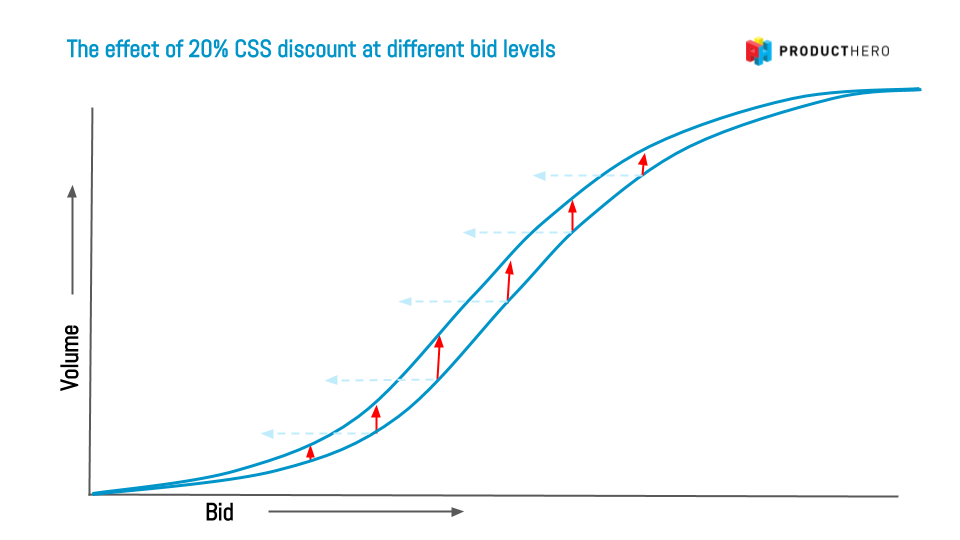Last updated on February 11, 2022
Why the effect of the 20% CSS discount differs per advertiser
When you switch from Google Shopping CSS to a Google CSS partner, you get a 20% discount on your CPC bid. This results in 25% extra bidding power. The increase in bidding power is the same for every merchant. But why do some merchants see a big jump in volume and do other merchants see a smaller change? To answer this question we researched the effect of bid changes in Google Shopping Ads.
How the CSS partner discount works
Switching to a CSS partner while leaving your bids untouched results in higher volume. Lowering your bids results in the same results against a lower CPC. If you want to know more about how you notice the effect of switching to a CSS partner please read this article: The effect of the 20% CSS partner discount on your shopping campaigns.
The effect of the bid increase visualized
In contrary to text ad campaigns with keywords, the volume increases by raising your bids in shopping campaigns can be visualized by an S-curve. This is because higher bids bring you into new keyword auctions.
When you switch to a CSS partner, this has the same effect as raising your bids 25%. What basically happens is visualized in the chart below: the chart moves to the left:

What you see is that the increase in volume depends on where you were on the line. If you were in the sweet spot in the middle or left from the middle of the S-curve, the absolute and relative growth of your volume with the same bids is significant and noticeable. If however, you were overbidding (right part of the S-curve) or underbidding (very left part of the S-Curve), the effect of the 25% bid increase on volume will be much less noticeable.
In case of overbidding
If you are too much on the right part of the S-curve (overbidding), I would advise to decrease your bids to get closer to the sweet spot. In case of automated bidding you should decrease your CPA goal or increase your ROAS goal. If you do this, your return on investment will improve and the effect of the 20% discount on your volume increase is higher. I have seen that a significant bid or CPA/ROAS change can result in just a very small decrease in volume (and in many cases hardly a decrease in returns) but a large decrease in advertising costs.
In case of underbidding
I have also seen advertisers that were on the very left part of the curve. In many cases they are in competitive markets and their bids are just too low to participate in the auctions where the interesting volume is. In case of automated bidding their CPA goal is too low and their ROAS goal is too high. In some cases the 25% bid increase when switching to a CSS partner can not be enough to bring them in the right zone. For those advertisers a combination of switching to a CSS partner and slightly raising the bids is the ultimate recipe becoming a much stronger and more competitive advertiser. In case of automated bidding the CPA goal should be increased and a ROAS goal should be decreased.
Conclusion
The effect of the 20% CSS partner discount is highly dependant on the level of your bids (in case of manual bidding) or CPA/ROAS goals (in case of automated bidding). The visualization in this article shows there is a sweet spot where your return on investment and the effect of the CSS discount is the highest. It is recommended to review your bids or goals to improve you return on investment and maximize the effect of the 20% CSS discount.
